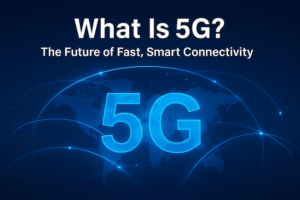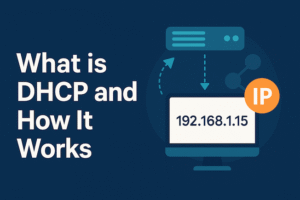Introduction: The Next Leap Beyond 5G
While 5G is still rolling out across the world, the next generation of wireless technology — 6G — is already under development. But what is 6G, and how will it transform the way we live, work, and connect?
6G represents the sixth generation of mobile communication technology, expected to deliver speeds up to 100 times faster than 5G. It aims to merge the digital, physical, and human worlds through advanced connectivity, artificial intelligence, and real-time data processing.
What Is 6G?
6G, short for Sixth Generation wireless, is the upcoming mobile network standard projected to emerge around 2030. It builds upon the foundation of 5G, enhancing its speed, reliability, and capacity.
According to IEEE Future Networks, 6G will not just connect devices — it will connect intelligence. By combining AI, edge computing, and terahertz (THz) spectrum, 6G will enable a truly “smart” ecosystem where devices anticipate needs and make autonomous decisions.
Key Features and Technologies of 6G
- Terahertz (THz) Spectrum – 6G will use frequencies between 100 GHz and 3 THz, offering unprecedented data rates and bandwidth.
- Ultra-Low Latency – Expected latency below 0.1 milliseconds, enabling instantaneous communication.
- AI-Driven Networks – Built-in artificial intelligence will optimize connectivity, energy use, and resource allocation.
- Holographic Communication – 6G will support real-time 3D holograms, revolutionizing virtual meetings and education.
- Integrated Sensing and Communication (ISAC) – Networks will simultaneously detect, map, and communicate, vital for autonomous systems.
- Massive Machine-Type Communication (mMTC) – Seamless interaction between billions of devices in IoT environments.
How 6G Could Change Everyday Life
6G will transform the digital landscape far beyond faster internet. Here’s how it could reshape different sectors:
- Healthcare: Real-time remote surgery with near-zero latency and AI-assisted diagnostics.
- Transportation: Fully autonomous vehicles communicating at microsecond precision.
- Education: Immersive virtual classrooms using holographic presence and mixed reality.
- Smart Cities: Hyperconnected urban environments optimizing traffic, energy, and safety.
- Entertainment: 16K streaming, real-time 3D concerts, and immersive virtual worlds.
6G vs. 5G: What’s the Difference?
| Feature | 5G | 6G |
|---|---|---|
| Peak Speed | Up to 10 Gbps | Up to 1 Tbps |
| Latency | ~1 ms | < 0.1 ms |
| Spectrum | Sub-6 GHz / mmWave | Terahertz (THz) |
| Core Technology | AI support | AI-native |
| Rollout | 2020s | Expected 2030 |
Simply put, 6G aims to deliver instant communication and immersive intelligence, taking human–machine interaction to the next level.
Global Development and Research
Several countries and organizations are already investing in 6G research:
- South Korea and Japan plan pilot projects by 2028.
- China launched a test satellite for 6G experiments in 2020.
- The European Union’s Hexa-X initiative, led by Nokia and Ericsson, is defining 6G standards.
- The U.S. is developing 6G technologies under the Next G Alliance.
Each aims to shape the standards that will define the future of global communication.
Challenges Ahead
While 6G promises revolutionary change, it faces major challenges:
- High energy consumption and sustainability issues.
- Infrastructure cost for THz spectrum deployment.
- Privacy and cybersecurity risks in AI-driven systems.
- Regulatory and global standardization hurdles.
Solving these will determine how fast and widely 6G becomes a reality.






